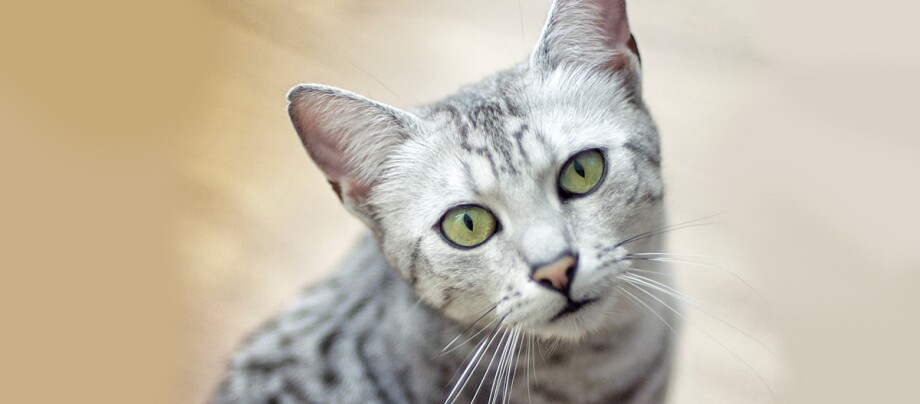Egyptian Mau - Lovable Exotic Beauty from the Land of Pharaohs
01.01.2024 - Reading time: 3 minutes

Many myths surround the Egyptian Mau, but one thing is certain: The graceful short-haired cat with the incomparable spots and the exotic appearance is strikingly similar to cat representations from Ancient Egypt. Intelligent, playful and strongly related to its humans, the elegant beauty integrates easily into the family.
NewsletterEgyptian Mau
Breed | Egyptian Mau |
Origin | Egypt |
Size | medium size, males grow larger than cats |
Weight | 4 to 5 kilograms (male), 2.5 to 3.5 kilograms (female) |
Physique | well-developed and well-proportioned musculature with graceful appearance; adult males may also have muscular necks and shoulders; proportionally longer hind legs with dainty paws |
head shape | slightly rounded, medium-long wedge shape without flat runs; gentle contour in profile; firm chin, thin cheeks; medium to large, moderately pointed ears with broad base and wide spacing |
Eyes | large and alert, almond-shaped and slightly oblique; with the intense green of gooseberries |
Coat and colour | medium length and glossy, silky in the colour smoke, with fine texture; dense in bronze and silver; M-shaped markings on the face; coat markings with irregularly shaped, contrasting patches giving the appearance of “waistcoat buttons” on the belly; stripes on legs, shoulder and tail |
Coat care | low maintenance |
Nature | sensitive, people-oriented, interactive and strongly related to their people; intelligent and eager to move around |
Special features | loose flap of skin from the flank to the knee of the hind leg, giving maximum agility when turning and jumping |
Owning | Ideally with garden and free range, if kept indoors, several climbing possibilities must be available |
Egyptian Mau: Nature
Have you instantly fallen in love with this exotic beauty with her distinctive markings and gooseberry green eyes? If you want an affectionate, strongly people-oriented housemate, you will appreciate these character traits in the Egyptian Mau. It is also known as the gentle cousin of the Abyssinian. It loves to interact with its humans, displaying self-confidence. Its quick reflexes are legendary and are said to be unmatched by any other cat breed.
Keeping and care of the Egyptian Mau
As the Egyptian Mau is a short-haired cat, the amount of grooming required is correspondingly low: brushing once a week is sufficient to maintain the shine of the short coat; more is accepted as extra pets. Because of their urge to play and move, a free-range environment is ideal for the Egyptian Mau. In a flat, it needs plenty of opportunities to climb and play. The Egyptian Mau does not like to be alone and needs at least one cat for company, especially when living as a home cat.
Have you considered health insurance for your little darling? And did you know that the pet insurance offered by our
cooperation partner Barmenia does not vary in price depending on the breed of your pet? Take a look here.
Egyptian Mau: Colours
With the Egyptian Mau you will discover the only domestic cat with natural patches, not cross-bred patches. These contrast in irregular sizes and shapes with the silver, black, smoke or bronze coat. Blue silver, blue spotted, blue smoke and blue are also recognised colour varieties. Black is accepted for breeding but not for exhibition.
History of the Egyptian Mau
The Egyptian Mau has been a recognised cat breed of the American Cat Fanciers’ Association (CFA) since 1977. At the beginning of the 1950s, Nathalie Troubetskoj discovered the spotted cats in Cairo. After she had started to build up her cattery in Italy, she emigrated to the USA, where she registered them in 1958 under the name “Fatima”. Since 1988, this rare breed has also been bred in Europe. By the way, “Mau” means cat in Egypt.
Egyptian Mau: Special features
As there are very few breeders in Europe, the Egyptian Mau is very rare in this country. A responsible breeder asks many questions in advance to find the best possible homes for his or her Mau kittens. He or she presents the pedigree and only gives the kittens to their new owners when they are 12 to 16 weeks old.






